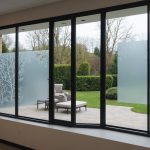The Impact of Sustainable Practices on UK House Designs
Sustainable house design UK is rapidly transforming the housing landscape by emphasizing eco-friendly homes that respond to the urgent need for climate action. The impact of sustainability is evident as UK house design shifts from traditional styles toward structures that prioritize energy efficiency, reduced waste, and a smaller carbon footprint.
Key drivers fueling this trend include stricter climate policies, evolving UK building regulations, and increasing consumer demand for green living. Homeowners now actively seek homes that not only reduce environmental impact but also provide healthier, more comfortable living spaces.
In the same genre : How Can Homeowners in the UK Enhance Energy Efficiency Dramatically?
Functionally, sustainable home designs in the UK integrate natural light, optimized insulation, and ventilation systems, making them more efficient and cost-effective. Visually, eco-friendly homes often showcase modern aesthetics with natural and recycled materials, blending sustainability with style. The impact of sustainability extends beyond environmental benefits, influencing architectural styles and encouraging innovation in how UK house design meets both ecological and lifestyle needs.
By embedding these sustainable principles, UK house design is advancing toward a future where eco-friendly homes become the norm rather than the exception.
Additional reading : How can you improve insulation in older UK homes?
Core Sustainable Building Practices in the UK
Sustainable building practices UK focuses on minimizing environmental impact while enhancing the comfort and efficiency of homes. One fundamental practice is energy efficiency, achieved through improved insulation and passive solar design. These methods reduce heat loss and maximize natural light, lowering reliance on artificial heating and lighting.
Eco-friendly materials are central to these practices. Builders prefer locally sourced and recycled materials because they reduce transportation emissions and waste. Materials with low-impact production methods also contribute to sustainability by limiting resource depletion and pollution.
Green technology integration further transforms UK homes. Solar panels are a prominent feature, harnessing renewable energy to cut down electricity costs and carbon emissions. Additionally, smart home systems optimize energy use by controlling heating, lighting, and ventilation efficiently, adapting to homeowners’ habits and preferences.
Together, sustainable building practices UK combine traditional design elements with modern technologies to create eco-friendly homes that are both functional and environmentally responsible. This synergy makes sustainable house design UK a practical approach for reducing energy consumption, enhancing home value, and supporting broader environmental goals.
Environmental and Economic Benefits of Sustainable Design
Sustainable house design UK significantly reduces the environmental footprint of homes by lowering energy consumption and cutting greenhouse gas emissions. The environmental benefits of sustainable homes include diminished reliance on fossil fuels and improved air quality, contributing directly to the UK’s national carbon reduction targets. For example, energy-efficient systems and better insulation prevent heat loss, reducing the energy needed for heating.
From an economic perspective, energy savings translate to lower utility bills for homeowners, making sustainable homes more affordable over time. The economic impact is also visible in increased property values, as eco-friendly homes attract buyers prioritizing energy efficiency and sustainability. Moreover, sustainable house design UK often lowers maintenance costs, since high-quality materials and technologies improve durability.
Long-term, these benefits extend to community well-being by creating healthier living environments and supporting UK sustainability goals. By combining environmental responsibility with financial advantages, sustainable house design UK proves to be not only a green choice but also a sound economic investment. This dual benefit encourages more widespread adoption of sustainable practices across the housing sector.
Influence of Regulations and Policies on Sustainable House Design
UK building regulations play a critical role in advancing sustainable house design UK. These regulations set mandatory house design standards focused on reducing carbon emissions, improving energy efficiency, and promoting environmental responsibility. The sustainability policy framework requires that new constructions meet strict benchmarks for insulation, waste reduction, and energy use, forcing builders and architects to innovate.
Builders now integrate eco-friendly materials and energy-efficient technologies to comply with increasingly stringent requirements. For example, the shift toward net-zero carbon homes is driving adoption of renewable energy and smart home systems within these regulations. Compliance is not optional but a necessity for legal approval, ensuring that sustainability is embedded in every stage of UK house design.
Emerging standards also anticipate future environmental challenges, pushing designers to consider durability and adaptability. Policymakers continue to update these rules, reflecting technological progress and climate targets. This dynamic regulatory environment challenges the construction sector but ultimately accelerates the impact of sustainability on UK homes, making sustainable building practices the new baseline rather than an exception.
Real-World Examples and Case Studies
Exploring UK sustainable house case studies reveals how visionary design translates theory into practice. One standout example is the Passivhaus-standard homes, which demonstrate remarkable energy efficiency by combining superior insulation with airtight construction and ventilation heat recovery. These projects achieve minimal energy use, setting a benchmark for future UK house design.
Another illustrative example is the use of innovative house designs incorporating adaptive shading and green roofs that blend aesthetics with function. These features reduce heat gain during summer and promote biodiversity, showing how eco home examples can enhance ecological value while maintaining comfort.
Collaboration often drives these successes. Homeowners, architects, and builders work closely to tailor sustainable solutions suited to site conditions, budget, and lifestyle needs. This cooperation ensures that eco-friendly homes not only meet technical standards but also resonate with residents’ preferences.
Lessons learned spotlight the importance of early integration of green technology and material choices to avoid costly retrofits. Case studies also highlight that sustainability is most impactful when combined with usability and design appeal, encouraging wider acceptance of sustainable house design UK across communities.
Practical Steps for Adopting Sustainable Design in UK Homes
Practical sustainable building tips are essential for anyone looking to create an eco-friendly home renovation UK or new build. To build a sustainable house UK effectively, start with energy efficiency: prioritise high-quality insulation and consider passive solar design to reduce heating and cooling demands. These measures significantly cut energy consumption, aligning with sustainability goals.
Next, sourcing eco-friendly materials is crucial. Opt for locally sourced, recycled, or low-impact products to minimise environmental harm from transportation and production. Materials like reclaimed wood and recycled bricks not only reduce waste but add character to the home.
Integrating green technology enhances sustainability further. Solar panels reduce reliance on grid electricity, while smart home systems optimise energy use by adjusting heating, lighting, and ventilation according to occupancy and weather conditions.
For existing homes, simple upgrades such as draught-proofing, LED lighting, and efficient appliances can significantly improve sustainability without major renovations. Homeowners should also consult professionals specialising in eco-friendly home renovation UK to tailor solutions that fit specific properties and budgets.
By combining these practical sustainable building tips, homeowners can efficiently adopt sustainable design principles and contribute to the wider impact of sustainability in UK house design.










